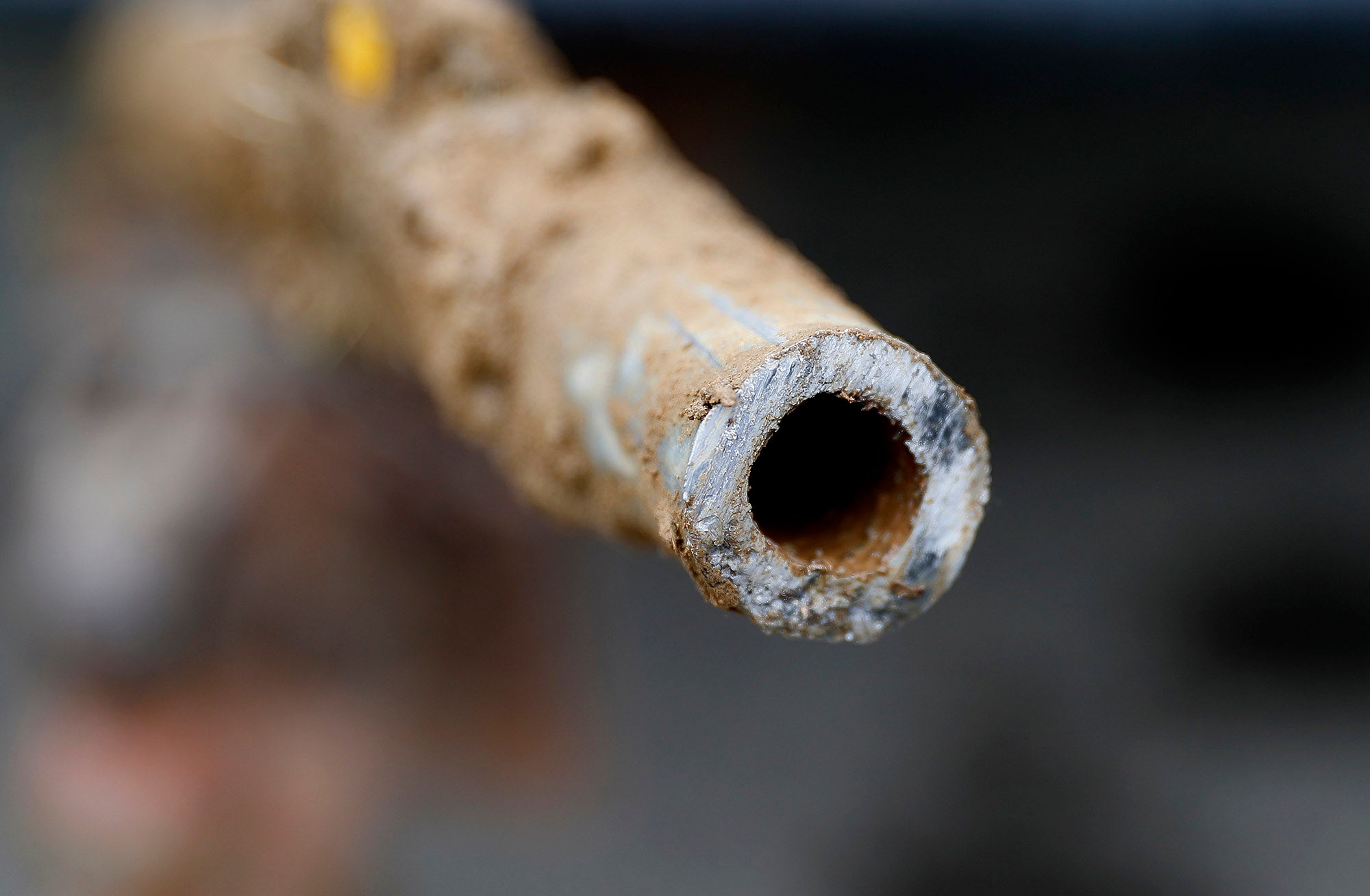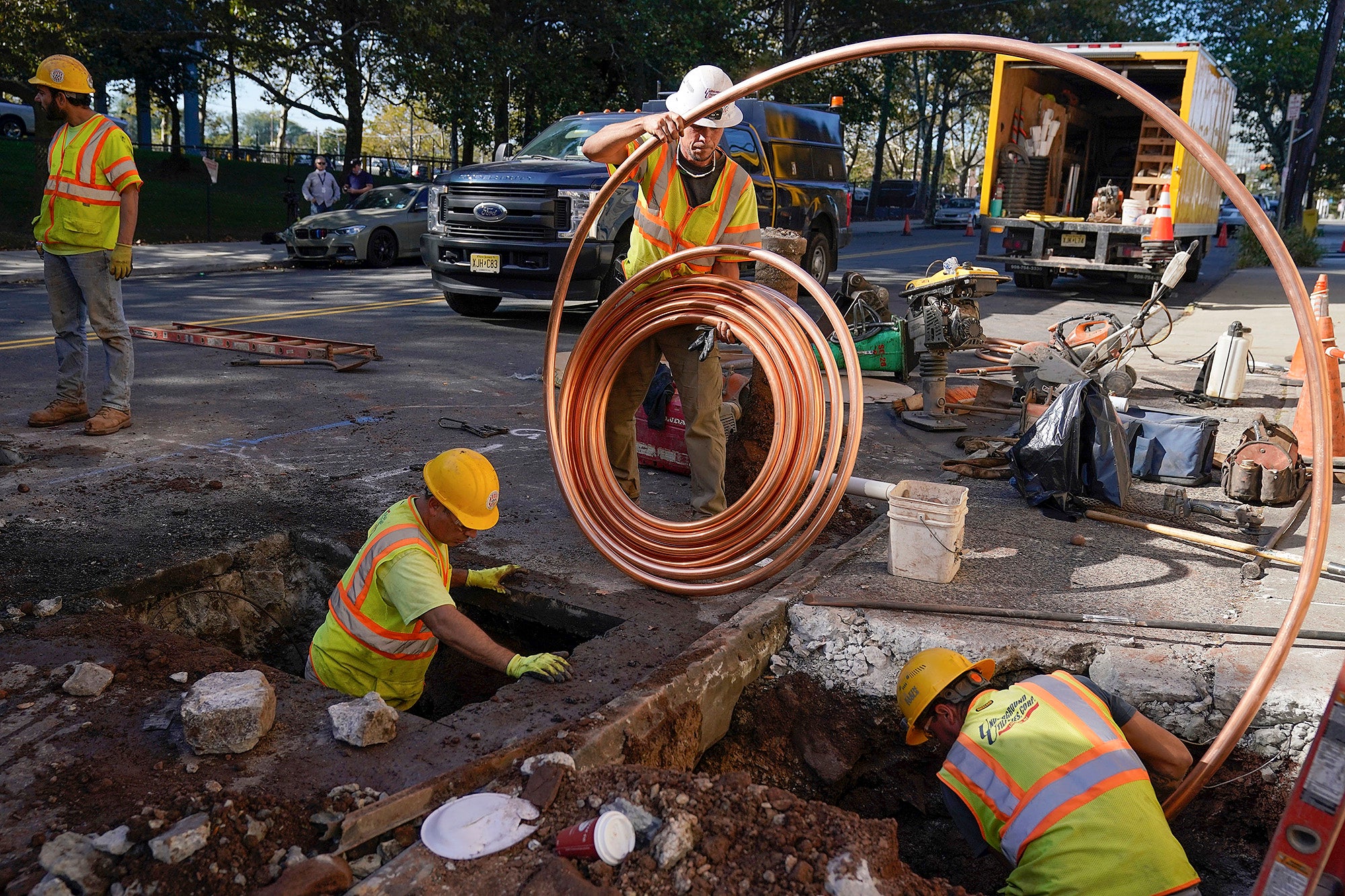We Just Got a Win to Secure Safe, Lead-Free Drinking Water
A Republican-run Congress attempted to repeal lead exposure protections, endangering millions of lives in the U.S. We fought back — and won.

We achieved significant environmental progress under the Biden administration, including on the stubborn public health issue of lead pipes. Nearly 22 million people across all 50 states still drink water through lead pipes. That problem was finally set to get solved with the passage of a key regulation last year and a significant funding stream to replace all the remaining lead pipes in America.
Then, suddenly, that progress was in jeopardy. This year, President Trump came to office along with a Republican majority in both houses of Congress bent on a profits-over-health agenda. They introduced a bill in Congress to repeal the regulation, endangering millions of U.S. lives. But thanks to public pressure, the bill missed a critical deadline, protecting the progress made on this issue.
This remarkable accomplishment sets us on track to tackle unsafe levels of lead once and for all. In the meantime, Earthjustice and partners will continue fighting for millions of Americans who remain impacted by lead contamination. One of them is Dionna Brown, 26, from Flint Michigan.
“Since I was born and until 2016, we lived in an old house that had lead pipes,” says Dionna Brown, 26, from Flint, Michigan. Even after moving into a lead pipe-free residence, a blood test showed elevated lead levels well into 2018. Brown’s grandmother, who lived most of her life in Detroit and later Flint, suffered from low white blood cell count and chronic kidney disease, conditions associated with prolonged toxic exposure to lead. She passed away five years ago.
For over a decade, the city of Flint endured one of the worst water crises in modern U.S. history. Lead contamination — worsened by inadequate water testing and poor governmental response in the predominately Black community — spurred a public health catastrophe in 2014 that is not yet fully resolved.

A lead pipe is shown after being replaced by a copper water supply line to a home in Flint, Michigan in 2018. (Paul Sancya / AP)
“Growing up, my mother always brought jugs of water from the store because she didn’t trust [drinking] water from the pipes. I never drank water from the pipes, but I bathed, brushed my teeth and cooked with it, so we all got exposed,” Brown says.
While the crisis ignited a nationwide crusade to tackle lead, nearly 22 million people across all 50 states still drink water through lead pipes. Recently, President Trump has ordered the Environmental Protection Agency (EPA) to block hundreds of millions in federal funding to states, complicating efforts to replace lead pipes and slowing the response to this crisis.
When in contact, lead spreads to the brain, liver, kidney and bones, and its residues can be found in teeth. There is no safe level of lead for anyone, especially for children, which is why Earthjustice has worked for years alongside our partners and clients to strengthen lead exposure protections.
Thanks to the pressure of frontline communities like Brown’s, along with successful lawsuits by Earthjustice and others, the Biden administration’s Environmental Protection Agency took action to address lead contamination. In 2024, it strengthened standards for lead in dust and unveiled the Lead and Copper Rule Improvements, requiring all drinking water systems nationwide to identify and replace lead pipes within 10 years.

Workmen prepare to replace older water pipes with a new copper one in Newark, New Jersey in 2021. (Seth Wenig / AP)
“Last year, we did a lot of public commenting when it came to the Lead and Copper Rule,” says Brown, who serves as the national director of Youth Environmental Justice Policy and Programs at Young, Gifted and Green, a youth organization that began during the Flint water crisis. “I led that initiative by getting people to sign on and doing public comment training, while youth got involved as well.”
Brown and her group have sat down with EPA officials to stress the importance of protecting vulnerable communities from lead exposure.
These significant steps to control lead exposure were in jeopardy this spring. The Republican-led Congress considered eliminating protections against lead – and not just for lead in drinking water. They also targeted the 2024 Lead Dust Rule for repeal. That public safeguard acknowledges that any amount of lead dust poses a risk to homes, schools, and childcare centers, and sets protections accordingly. Recent studies show that more than 170 million Americans have been exposed to this chemical in early childhood, through contaminated water, air, dust, paint, and soil.
If Congress had eliminated lead exposure protections, it would have weakened national safeguards against lead in drinking water and homes and schools. This would have kept historically overburdened communities in places like Iowa, New Jersey, Colorado, and Michigan exposed to lead in their air and water for generations to come.

A young boy is held by his mother as he gets his blood drawn in order to test his blood lead levels at Carriage Town Ministries in Flint, Michigan in 2016. (Brittany Greeson for The Washington Post via Getty Images)
Faced with the potential dismantling of the protections against lead in water and lead in dust, Earthjustice and our partners stood ready to shield hard-earned protections. Thanks to public pressure, the bill missed an important deadline, and the LCRI and Lead Dust Rule will remain in place.
As Earthjustice and partners remain vigilant to preserve lead exposure protections Brown pledges to carry on her grandmother’s legacy and teach others about environmental justice.
“We need to save people’s lives, and lead [exposure] protections do exactly that,” says Brown. “At this point, we are already playing with people’s lives. This is bigger than just being left versus right. Humanity should not be political.”
These efforts by the Trump administration and Congress are part of a larger push to get rid of public health protections that save people from harmful chemicals, like lead, despite overwhelming evidence of harm. Here’s what that means for our health, economy, and future — and how we’ll fight back.
Why we need lead exposure protections
- Public health: Stronger protections on lead contamination will save millions of Americans from exposure to toxic lead in drinking water, which poses severe health risks, especially to children, who are most vulnerable to lead-related developmental harm. Now, communities drinking lead contaminated water won’t have to wait decades for help.
- The time to act is now: If new protections against lead in drinking water had been eliminated, by the EPA’s own estimates, only 5% of lead service lines would be replaced over the next 35 years — instead of all lead service lines being removed in the next decade.
- Congress already committed to fund this: Congress committed to funding the Bipartisan Infrastructure Law, which provides states with an unprecedented and sorely needed $15 billion dollar investment in lead service line removal funding.
How does lead contamination impact our health?
- Lead is a suspected carcinogen and neurotoxin that can cause irreversible developmental harm in children, learning disabilities, and impaired hearing.
- In adults, lead exposure may cause memory loss and reproductive impairments, and it is also a known risk factor for cardiovascular disease mortality.
- Costly: The widespread public exposure to lead — which is entirely preventable — costs the U.S. economy over $50 billion every year in lost economic productivity resulting from reduced cognitive potential and health-care costs from heart disease.
How is Earthjustice fighting lead contamination?
- A long fight: For years, Earthjustice has pushed to update basic health and safety protections for lead contamination, using our deep bench of legal expertise to protect communities, especially those who are most vulnerable to lead contamination.
- In 2019, Earthjustice sued the U.S. EPA on behalf of community advocacy and environmental organizations for failing to establish protective lead hazard standards for older housing and child-occupied facilities like schools and daycares. In 2021, we sued the EPA again for its failure to propose adequate measures for replacing lead pipes in homes, schools, and childcare facilities.
- In response to successful lawsuits by Earthjustice and others, as well as grassroots pressure from frontline communities, the EPA unveiled landmark rules in late 2024 that requires the replacement of most lead pipes nationwide within a decade and tighten its standards for lead in dust from deteriorating lead paint found in many homes, schools, and daycares.
Though the threat from Congress is passed, there is still a chance that the EPA could undermine the Lead and Copper Rule through a rule making process. We’ve come too far on strengthening lead protections to back down.
Earthjustice’s Toxic Exposure & Health Program uses the power of the law to ensure that all people have safe workplaces, neighborhoods, and schools; have access to safe drinking water and food; live in homes that are free of hazardous chemicals; and have access to safe products.